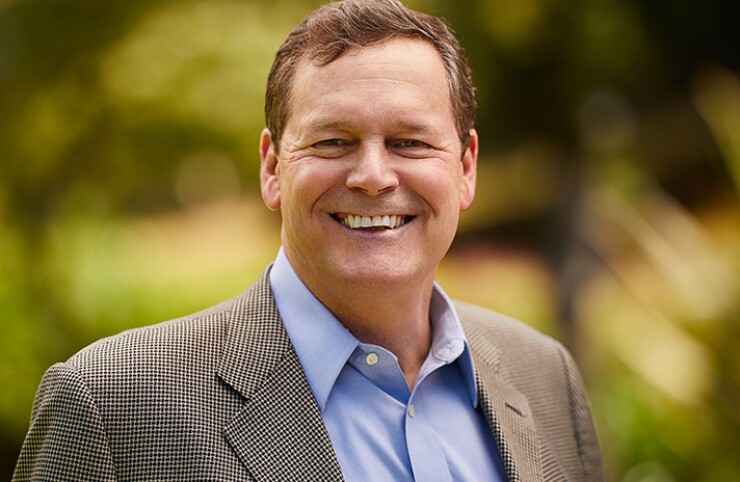Debt issued by the California Community Choice Finance Authority, a conduit for the state's community choice aggregators, has climbed to nearly $10 billion in the three years since its inception.
The first California CCA agency was created in 2010 to offer communities alternatives to purchasing power from private utilities and to encourage growth in more climate-friendly methods of producing power.
The majority of the debt sold for CCAs in California
Since 2023, the CCCFA, a joint powers authority created in 2021 to reduce the cost of power purchases through electricity pre-payment deals, has issued $7.05 billion of bonds, including $1.1 billion in clean energy project revenue bonds priced by Morgan Stanley in January, making it the top issuer of green bonds nationally last year, said Garth Salisbury, chief financial officer for Marin Clean Energy and a CCCFA board member and its treasurer/controller.

"There has been a huge uptick in issuance for three fundamental reasons," Salisbury said.
First, the success and number of completed transactions has caused the CCAs to embrace the financing structure. Next, the existence of the CCCFA as a ready conduit issuer makes completing prepayments much easier. And, third, higher interest rates produce better results for prepayment transactions, he said.
"With interest rates at the highest levels in 15 years, it is a good time to execute prepayment transactions," Salisbury said.
In contrast, when the Federal Reserve reduced interest rates to near zero after the 2008 financial crisis, and maintained those low rates for years, it was not a good environment for prepayment transactions, so very few were done, he said.
He added, demand for electricity supplied by the CCAs was not a factor in growth in the CCCFA's bond volume.
"Our recent successes have allowed us to do more, which ultimately allows us to bring cleaner energy to our customers at lower rates," Salisbury said. "Our mission is to confront the climate crisis by eliminating fossil fuel greenhouse gas emissions. These bonds are a major part of that effort."
Founding members of the JPA are Marin Clean Energy, Central Coast Community Energy, Clean Power Alliance, Ava Community Energy and Silicon Valley Clean Energy. Pioneer Community energy is an associate member.
In addition to saving customers money by providing an alternative to investor-owned utilities, like Pacific Gas & Electric, San Diego Gas & Electric and Southern California Edison, the aim of the state's utility aggregators is to propel growth in renewable energy sources.
The bonds issued by CCCFA will help "accelerate the transition to clean energy," Salisbury said.
They are labeled "clean energy" project revenue bonds and are structured similar to prepay gas bonds long used in the southeast. They involve a tax-exempt public electricity supplier — the CCA — a taxable energy supplier and CCCFA as the municipal bond issuer.
The three parties enter into long-term power supply agreements for zero-emission clean electricity sources, like solar, wind, geothermal and hydropower. The revenue bonds issued by CCCFA fund a prepayment of energy to be delivered over 30 years, according to the JPA's website.
The energy supplier, paid with bond proceeds, provides a discount to the CCA on the power purchases based on the difference between the taxable and tax-exempt rates.
The discount is historically in the range of 8% to 12%, and minimum discounts are negotiated for each transaction, Salisbury said.
Over the past decade, local governments in
The bond sales, which have grown as CCAs have taken off in the state, have been similar to the gas prepay bonds in the southeast, said Dan Aschenbach, a principal consulting partner with AGVP Advisor, which he founded in 2019.
"Because of their improving credit quality, they are in a better position to issue debt," Aschenbach said. "They are a stronger credit now, because they have been around for a while, the business model has improved, and there is an acceptance of their fundamental strengths."
Aschenbach, who left Moody's Ratings after 40 years as a senior vice president and lead credit analyst on U.S. public power and electric and gas utilities, worked on Moody's first-ever rating of a CCA.
All of the CCAs that have credit ratings and pretty strong financial positions, Aschenbach said.
He attributed part of the growth of CCAs to the problems experienced by investor-owned utilities, like PG&E, which has raised rates substantially, to deal with the tens of billions in liabilities from wildfire lawsuits that forced the company into its
"There is also a lot of support for CCAs at the state level," he said.
The prepayment bond structure isn't without risk, Aschenbach said. "One of the biggest risks is if the structure falls apart then the CCA has to go out and procure power at maybe not the right time, maybe when power prices are high," he said. It would mean the loss of the certainty in prices provided by the bond structure, he said.





